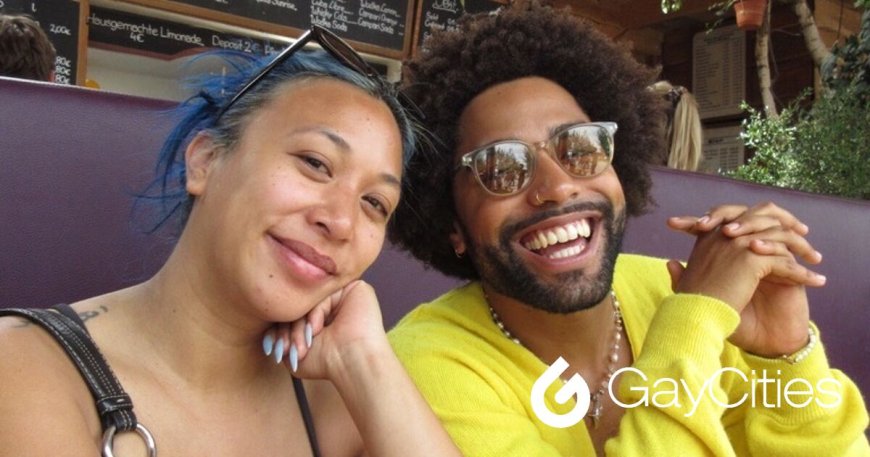An insider’s guide on what to do and where to stay in Berlin
Here's where to stay in Berlin, where to go to see the sights, and how to get there.


Berlin, Germany, is a culturally-dense city widely known for its off-the-charts nightlife, open lawn parks, extensive graffiti art, bike-friendly roads, historical origins, and, most notably, its very visible queer community.
Built in 1907, the Adlon Kempinski is an illustrious luxury hotel in the capital city’s epicenter, between East and West Berlin. The Brandenburg Gate, perched in front of the hotel, reminds guests of Berlin’s history and culture.

Pack your bags, we’re going on an adventure
Subscribe to our weekly newsletter for the best LGBTQ+ travel guides, stories, and more.
Subscribe to our Newsletter today
When you first enter the hotel, the concierge will usher you in while you take a moment to absorb the grandeur of the huge lobby, where metropolitan corporate workers and travelers rest to converse, dine, and drink. I stayed in a suite overlooking the major city plaza, Pariser Platz Square, during my trip.
Tourists converge here to soak in the historical monuments while local bikers zoom by to reach their next destination. Suites at the Adlon are more expensive because of the professional on-site service and opulent accommodations.

My room included a beautiful foyer, a massive bathtub, a standing shower, and a bed meant for a king. The Adlon also has an extensive breakfast buffet that serves everything from pastries to customizable omelets and seafood for when you climb out of bed.
The hotel’s two Michelin-starred chef, Lorenz Adlon Esszimmer, was booked out, so I chose the Brasserie Quarré for lunch, with its pristine terrace venue offering German and quality international cuisine. My server sparked a taper candle for my solo lunch, and to compliment the romantic scene, I ordered a lobster bisque dish paired with the wild garlic risotto and a seared steak sitting on top. I washed all this down with a glass of white wine.

I rode a bike to explore the surrounding areas after lunch. Bike everywhere because it is a fun way to see the remarkable city. I biked to Tiergarten, Berlin’s biggest park, which exceeds the size of New York City’s Central Park. Nearby, Kreuzberg and Mitte are young, dynamic areas about a 10-minute drive from Hotel Adlon. If you want to take a train ride on Berlin’s main mode of transportation, the U-Bahn, the ride will take about 20 minutes. In these areas, you will find major Döner kebab restaurants, second-hand retail stores, myriads of cafes, and bars full of locals during the summer.
In Kreuzberg, underground nightlife thrives, and so do queer travelers and locals’ access to clubs that offer sexually-liberating environments and high-tempo techno music. Watergate is one of the most popular venues in this neighborhood on the tucked-away street of Falckensteinstraße, where global DJs visit to play a great set.

Club culture in Berlin often means long lines and exclusive entry with cash-only fees. Luckily, being from Los Angeles prepared me for this type of treatment, and security is fairly kind to foreigners.
Outside of Watergate, Berghain, Panorama Bar, and KitKatClub are major hotspots for LGBTQ+ life, but you may have to dress to impress to get in. For example, at KitKatClub, anyone can be turned down for whatever reason. The people behind me were denied entry for wearing open-toed shoes, while others were too “covered” in white clothes. Wearing black and alt-apparel is the best way to guarantee entry to Berlin’s most elite clubs.
Related
How to get into Berghain according to party professionals
Housed in an abandoned soviet-era power plant, Berghain is infamous for its strict, often opaque door policy.
Other gay-friendly bars, Prinzknecht, Woof, and Bull, are stacked on the block of Fuggerstraße 33, Berlin’s queer nightlife district.

If going out isn’t a must when traveling, many restaurants, museums, and parks provide a more tranquil space.
In Mitte, Coccodrillo is a hip Italian restaurant that plays trendy music and has an art-deco-inspired atmosphere. Nearby are myriads of family-owned Asian eateries that serve authentic fare that can cleanse your palette from the heavy beer and meat meals many indulge in when traveling to Germany.
At Zig Zag, the traditional jazz club hosting nightly performances, I devoured a whole schnitzel (breaded meat) meal served with spätzle (fried egg noodles) and a potent pint of beer.

During my off times, when I needed to rest away from the city center, I would lounge at Volkspark am Weinberg Park, a beautiful open space where locals lay down on rolling lawns to read, play music, share beers, and stroll. A short 15-minute bike ride away, I would constantly return to this stylish park to absorb the great diversity of Berlin.
During my visit to Berlin, the UEFA Euro 2024 championships were taking place, so I would go to local bodega-like storefronts called Spätis. They would screen the game against Switzerland for people walking by, and hundreds would pull up with plastic crates to sit on while cheering on their favorite team. This was a fun way to immerse myself in the city’s pride in their country’s football team.

Along the Spree River, you can view remnants of the Berlin Wall painted over by local artists to redefine what the barrier means for natives. The Jewish Museum, DDR Museum, and German Historical Museum are great spaces to learn more about the war history of Germany from a modern perspective. If you are seeking more contemporary art — Hamburger Bahnhof, Urban Nation, and Dark Matter have exhibitions that exemplify the vastness of Berlin’s lively art museum community.
On the East Side Gallery section of the wall, the controversial and loved portrait of dictators Leonid Brezhnev and Erich Honecker sharing a kiss is an artistic reclaiming of Berlin’s progress today.

 Mark
Mark 





